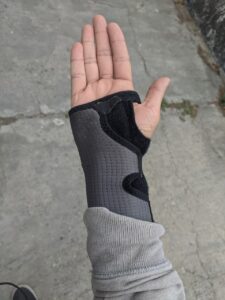Lupus Joint and Muscle Pain
Lupus, a chronic autoimmune disease, affects various systems in the body, including the musculoskeletal system. Understanding the intricacies of lupus joint and muscle pain is crucial for effective management and improved quality of life. In this article we’ll look at the effects of lupus on joint and muscles as described in “The Lupus Encyclopedia” in Chapter 7, titled “The Musculoskeletal System.”
The musculoskeletal system is comprised of the muscles (musculo-), bones (“skeletal”), joints, and adjacent structures (such as tendons). The joints are the hinges between the bones that allow movement.
Approximately 90% of SLE patients have joint or muscle pain at some point due to their lupus. Because the musculoskeletal system is the most common part of the body to be affected by SLE (causing aches and pains, or rheumatism), rheumatologists became the specialists dedicated to diagnosing and managing SLE patients.
Osteoporosis (fragile bones that can break) and avascular necrosis (where a section of bone dies) are also musculoskeletal problems that occur in SLE. However, these are usually not due to the inflammation of lupus itself and are discussed in part III.
The Lupus Encyclopedia (2nd ed.), p. 126
The Musculoskeletal System: Joint and Muscle Pain with Lupus
The musculoskeletal system encompasses muscles, bones, joints, and adjacent structures such as tendons. Joints serve as the hinges between bones, facilitating movement. In lupus, approximately 90% of patients experience joint or muscle pain at some point, making the musculoskeletal system one of the most commonly affected areas.
Understanding Lupus Joint and Muscle Pain
Joint and muscle pain can manifest in various ways, ranging from mild discomfort to debilitating symptoms that significantly impact daily life. Symptoms may also include stiffness, swelling, tenderness, and reduced range of motion in the affected joints. Understanding the underlying causes of joint and muscle pain in lupus is essential for effective management and symptom relief.
Causes and Contributing Factors
In lupus, joint and muscle pain can arise due to inflammation, a hallmark feature of the disease. The immune system mistakenly attacks healthy tissues, including those in the joints and muscles, leading to pain and discomfort. Additionally, other factors such as osteoporosis (fragile bones) and avascular necrosis (bone death) may contribute to musculoskeletal problems in lupus patients.
Managing Lupus Joint and Muscle Pain: Strategies for Relief
Effective management of lupus joint and muscle pain involves a comprehensive approach that addresses both the underlying inflammation and symptom management. Here are some strategies to help alleviate pain and improve quality of life for individuals living with lupus:
Medications
Medications may be prescribed to reduce inflammation and alleviate pain. These include:
- nonsteroidal anti-inflammatory drugs (NSAIDs)
- corticosteroids
- disease-modifying antirheumatic drugs (DMARDs)
Additionally, these medications can help manage symptoms and improve joint function.
Physical Therapy
Physical therapy exercises and techniques can help improve joint flexibility, strengthen muscles, and reduce pain. A qualified physical therapist can design a personalized exercise program tailored to the individual’s specific needs and limitations.
Lifestyle Modifications
Making lifestyle changes such as maintaining a healthy diet, managing stress, getting regular exercise, and ensuring adequate rest can help manage lupus symptoms. This includes joint and muscle pain. Avoiding triggers such as excessive sun exposure and quitting smoking can also contribute to symptom management.
Alternative Therapies
Complementary and alternative therapies such as acupuncture, massage therapy, and herbal supplements may offer additional relief for joint and muscle pain. However, it’s essential to consult with a healthcare professional before trying any new therapy or supplement to ensure safety and efficacy.
Understanding the complexities of joint and muscle pain is crucial for individuals living with the condition. By adopting a comprehensive approach to management that addresses inflammation, symptom relief, and also lifestyle modifications, individuals can effectively manage their symptoms and improve their quality of life.
For more in-depth information on joint and muscle pain:
Read chapter 7 of The Lupus Encyclopedia, edition 2
Look up your symptoms, conditions, and medications in the Index of The Lupus Encyclopedia
If you enjoy the information from The Lupus Encyclopedia, please click the “SUPPORT” button at the top of the page to learn how you can help.
What are your comments and opinions?
If you have lupus, what has your experience been? What do you recommend for other patients?
Do you have any questions to ask Dr. Thomas?
Please click on “Leave a Comment” above to comment.
Please support “The Lupus Encyclopedia” blog post page
Click on “SUPPORT” at the top of the page to learn how you can support “The Lupus Encyclopedia“
No comment yet, add your voice below!





Leave a comment